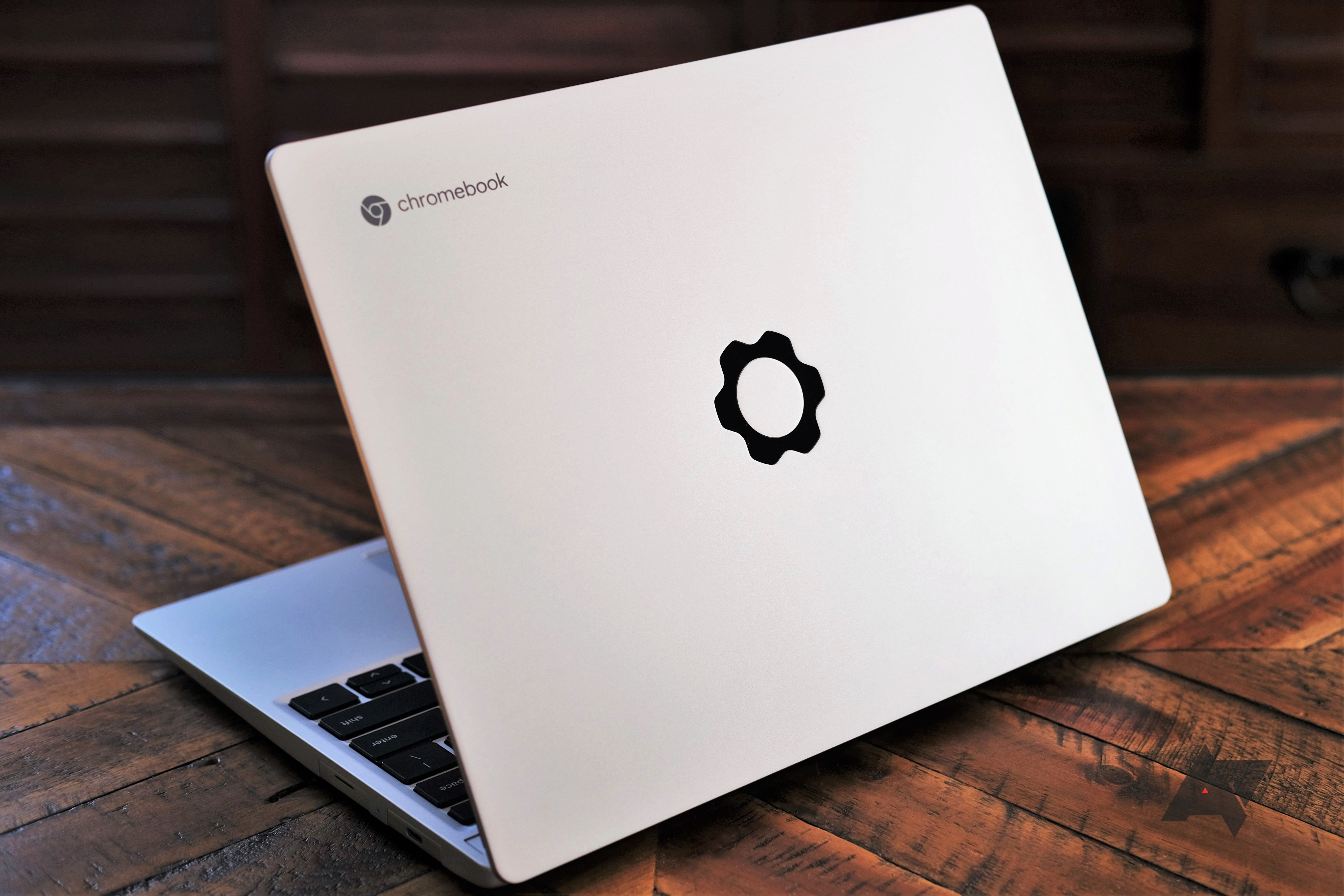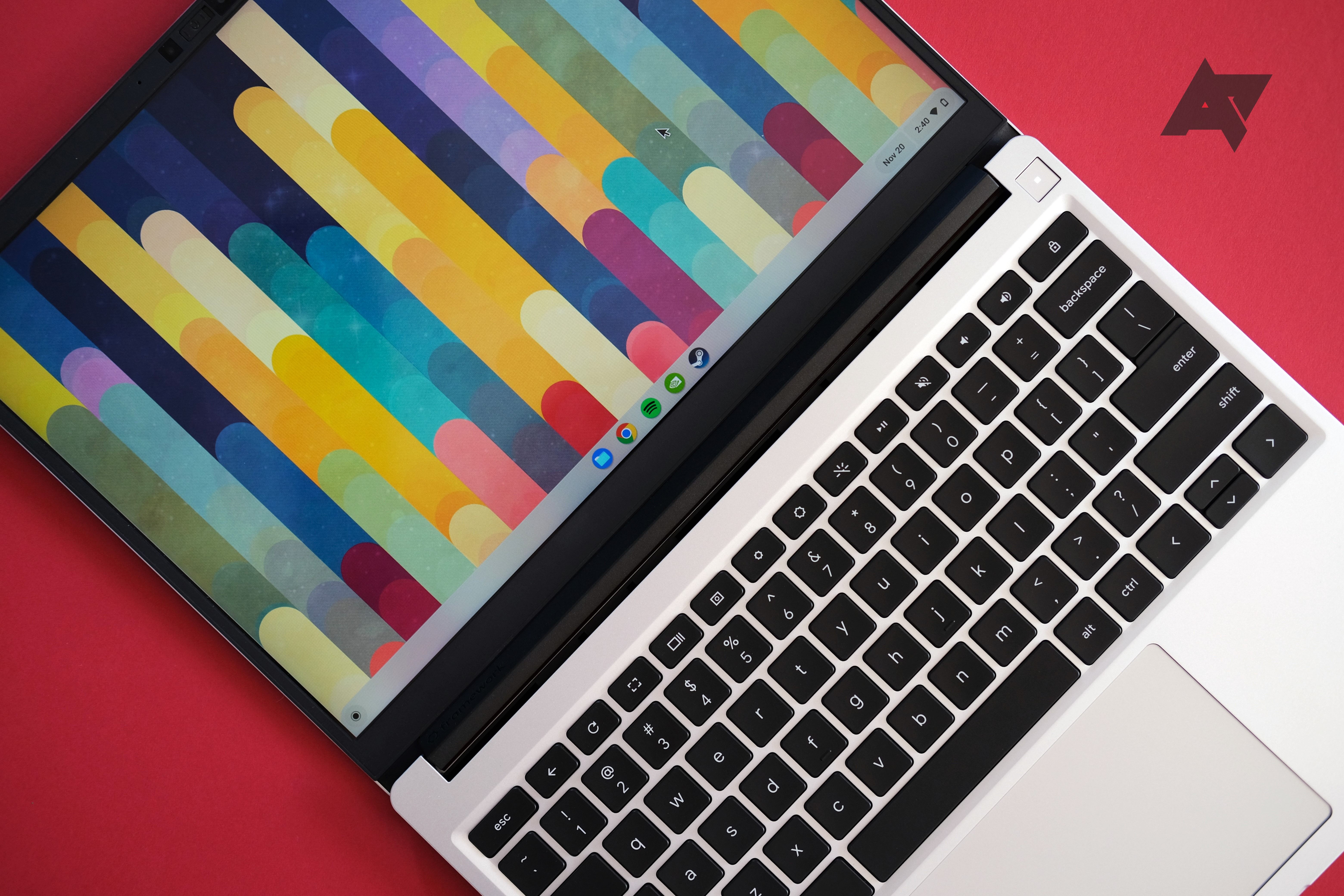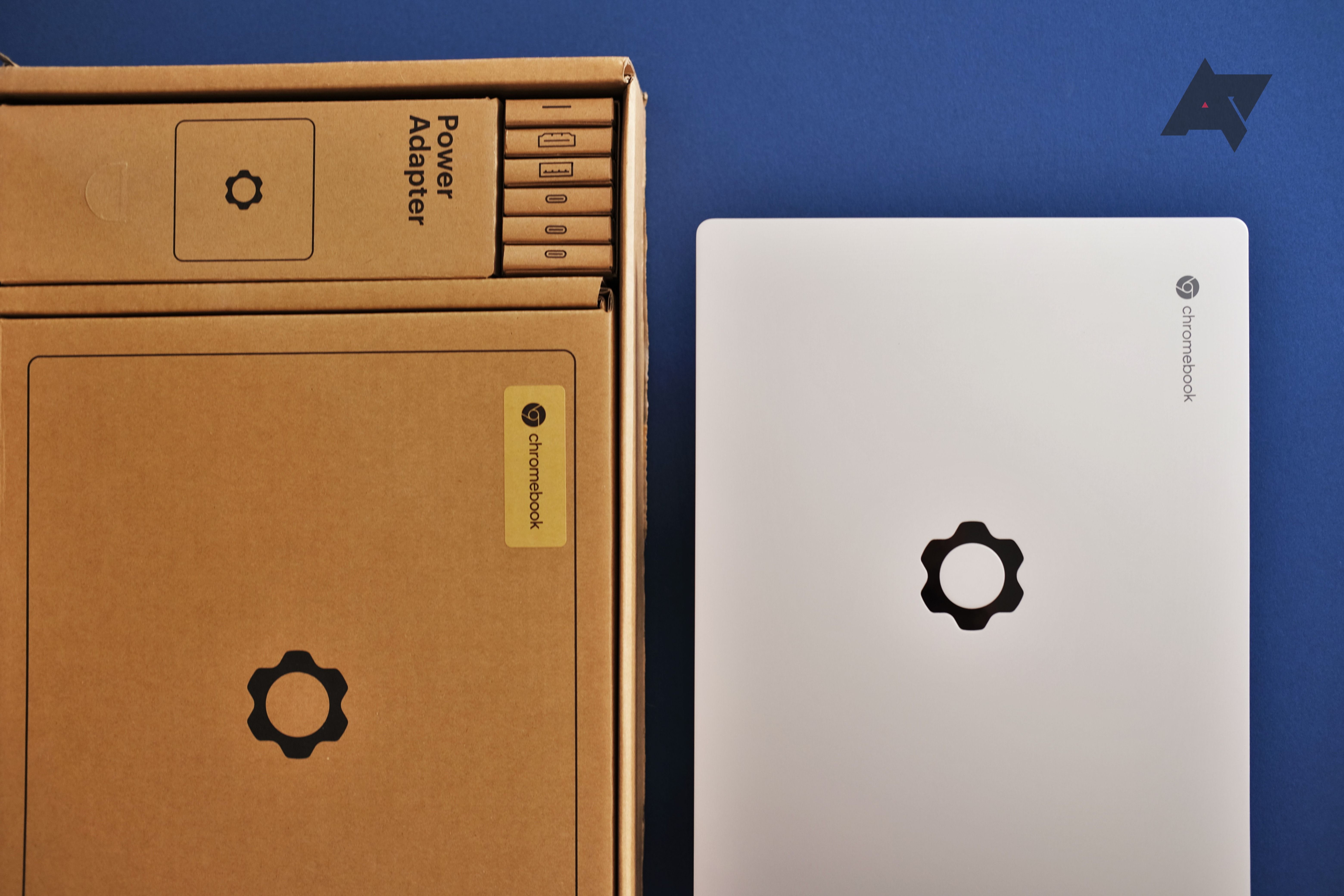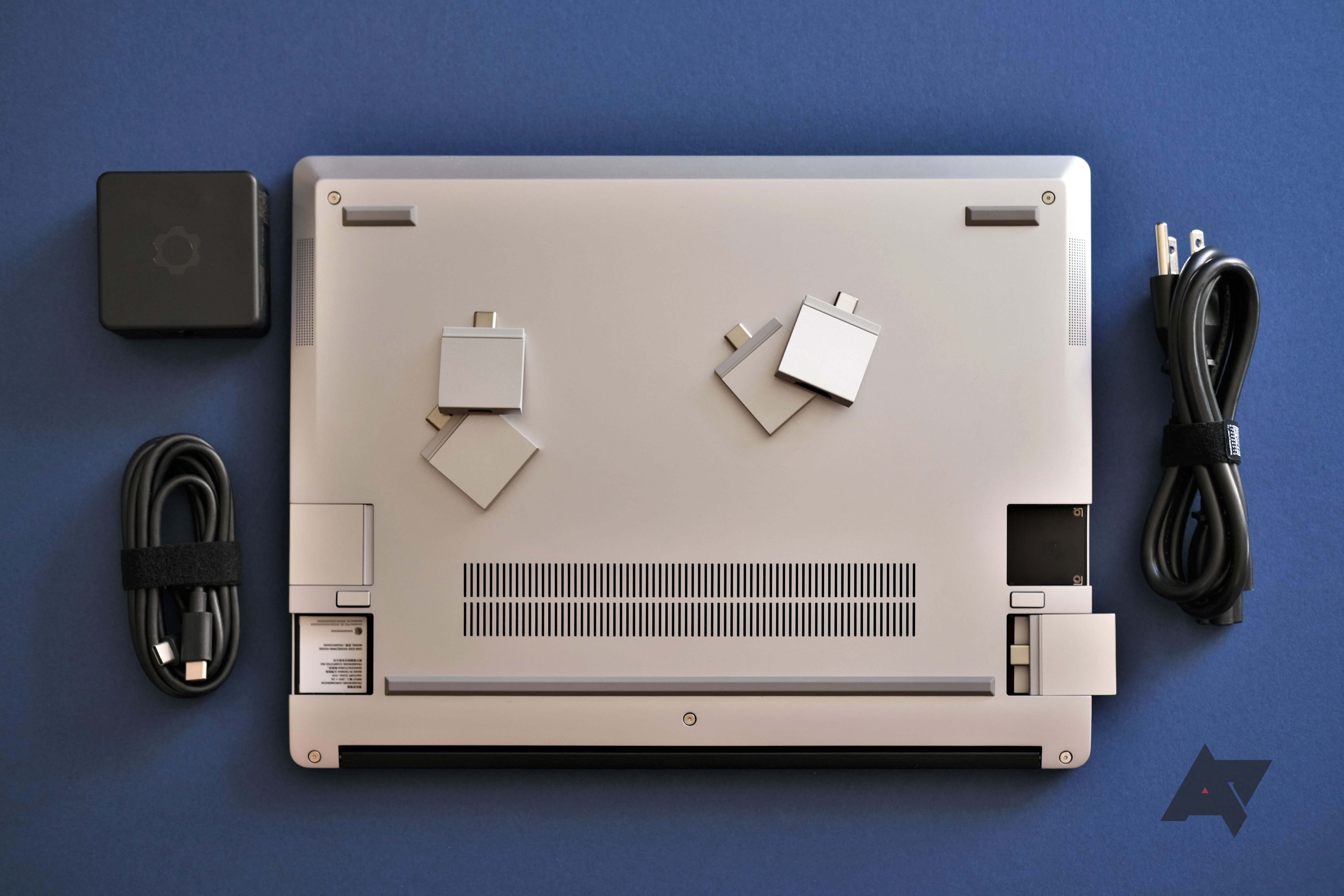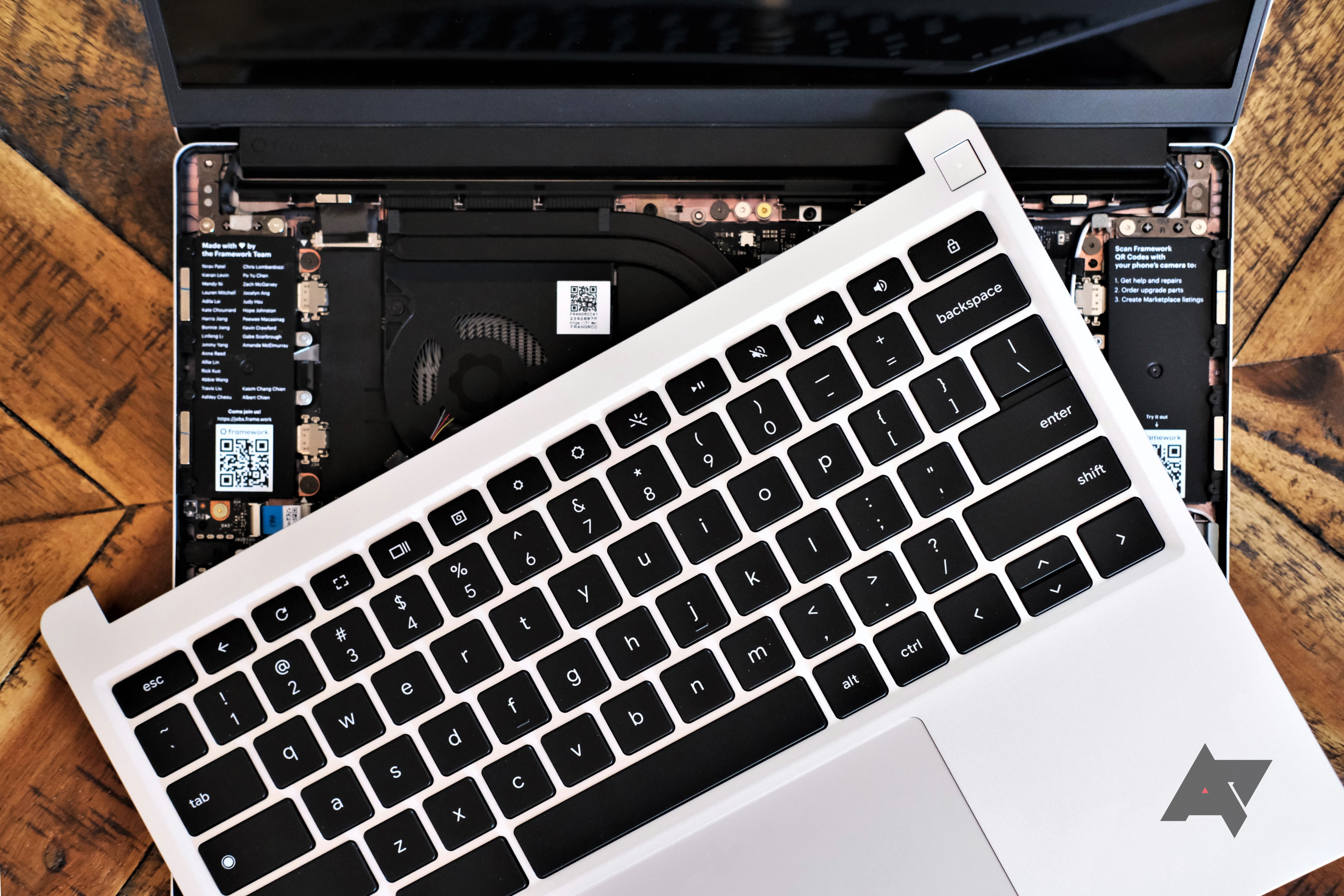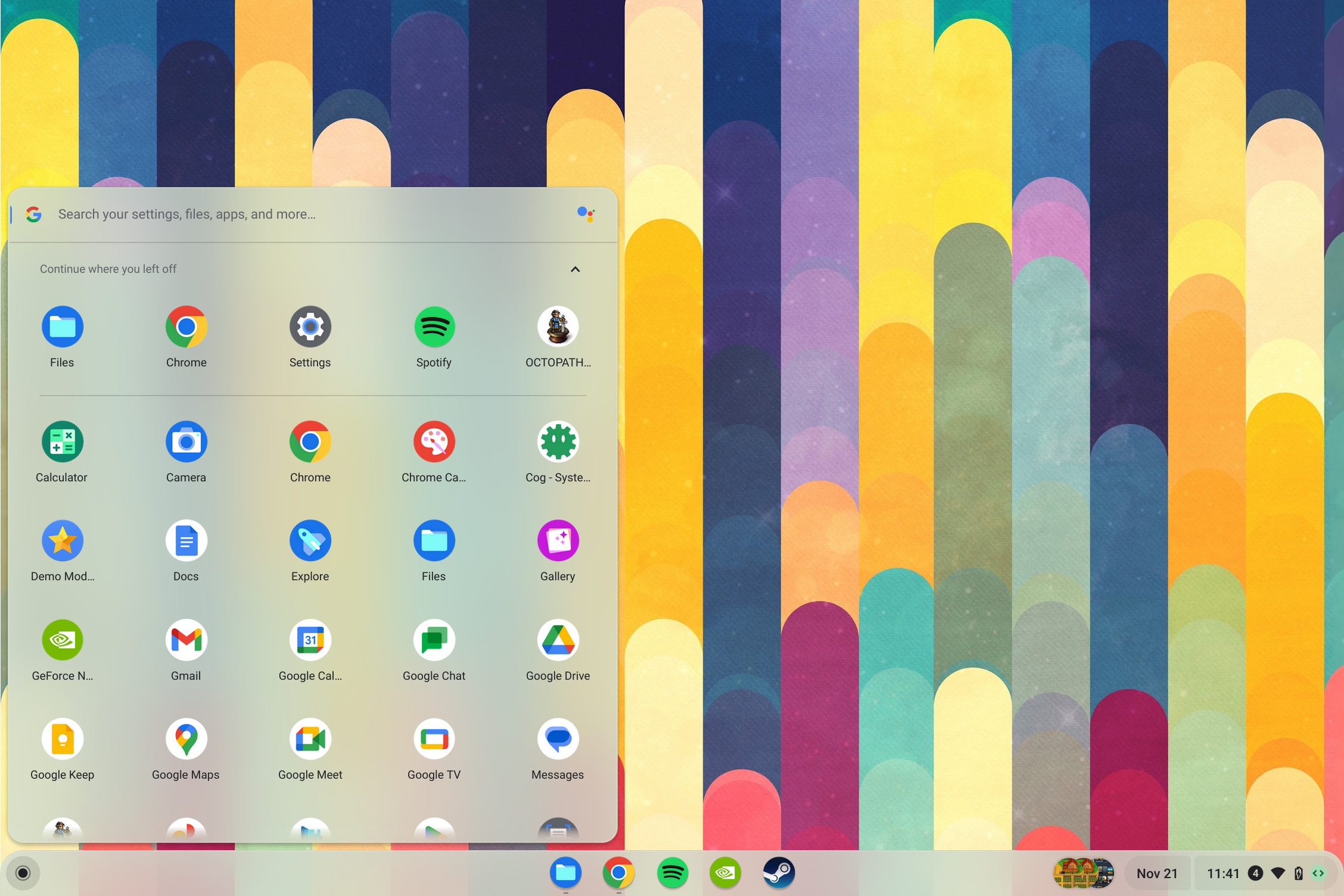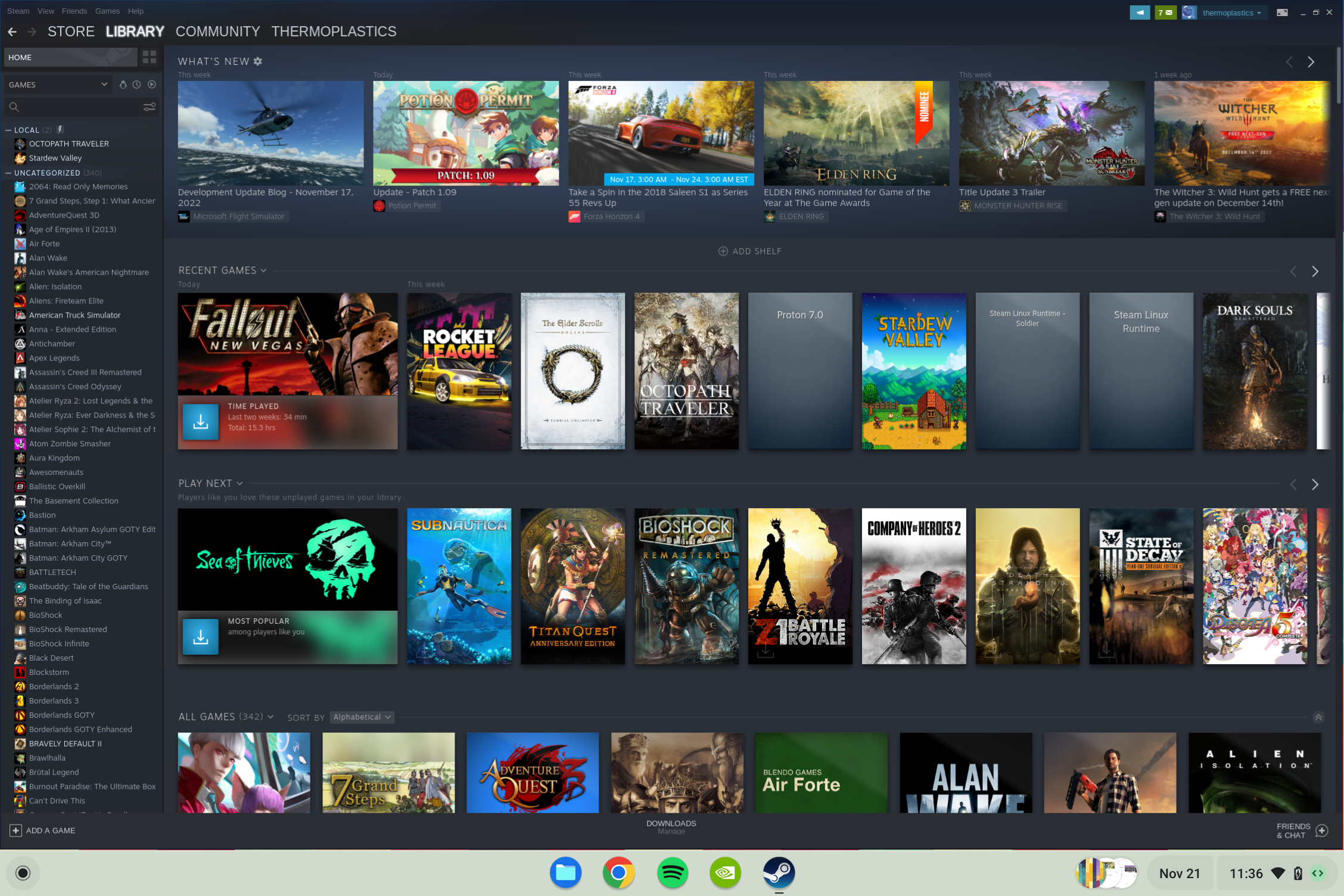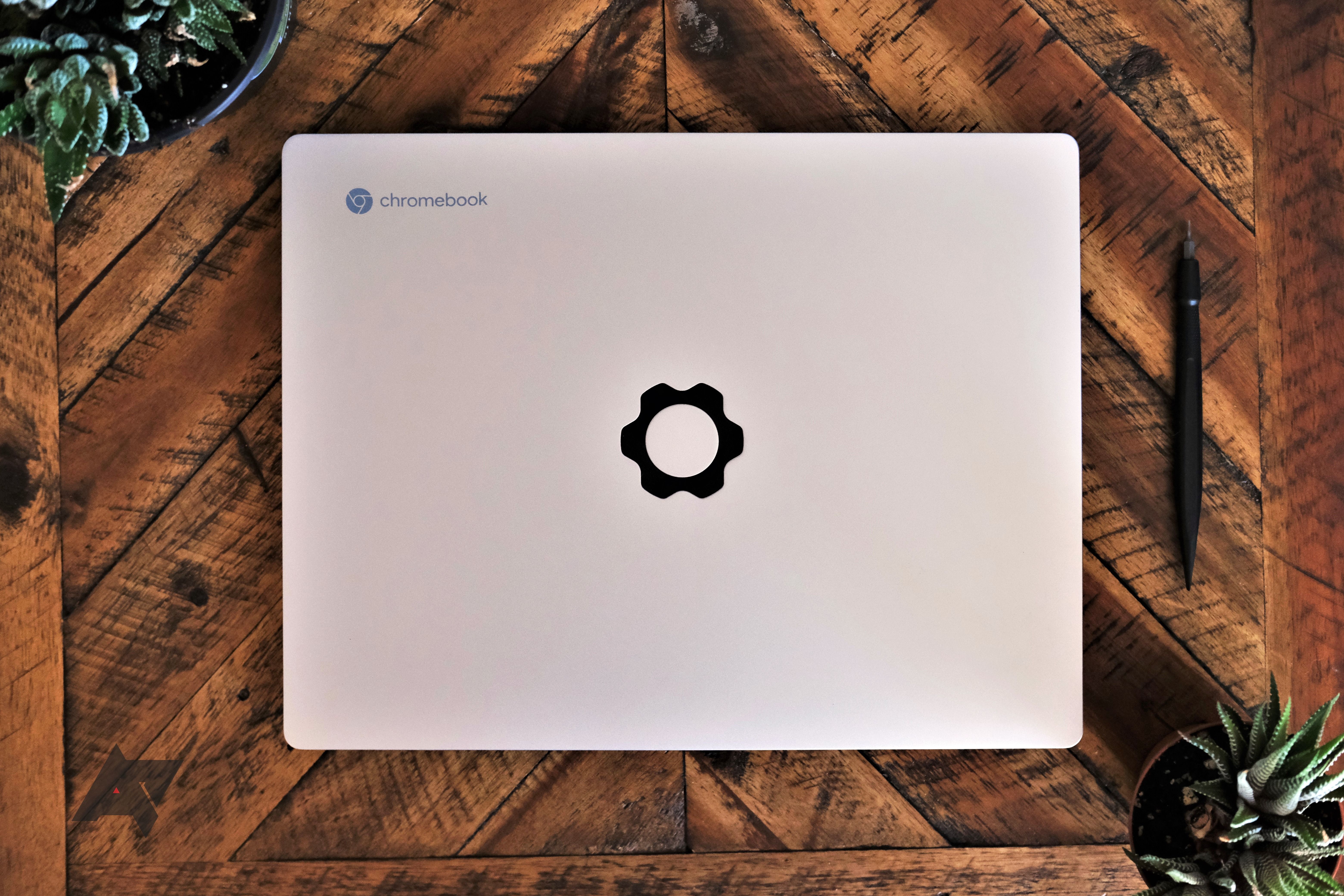When was the last time you were excited about a Chromebook? I know I can't remember. Sure, we've seen a couple of interesting devices through the years, like the Pixelbook and the Dragonfly, but have I literally jumped at the opportunity to review a Chromebook? Not until Framework announced the Framework Laptop Chromebook Edition.
Framework is a company that offers Windows and Linux laptops with interchangeable internals. Much like a desktop, you can replace every bit of a Framework device, and for some reason, Framework has decided to launch a ChromeOS model, which I find pretty exciting.
Framework has essentially taken its 12th-generation Windows/Linux machine and tweaked it with Google's help to offer a fully-functional Chromebook, all while retaining its impressive internals, such as an i5 that's actively cooled. Not only does it offer plenty of performance, but once these specs are out of date, you can simply buy a fresh mainboard to bump up to the latest CPU architecture.
The only caveat is that this upgradability comes at a cost; the Chromebook retails for $999, and mainboard upgrade kits can go for just as much, sometimes more (if you opt for an i7). This wide-open freedom does come at a cost, but I'd imagine this trade will be worth it for more than a few of you. Let's dig in.
The Framework Laptop Chromebook Edition is a unique Chromebook that offers fully-upgradeable internals and externals, from the motherboard to the screen bezel. This consumer-friendly design is paired with a choice of impressive specs, such as an i5 paired with 8GB RAM and 256GB storage, and since the CPU is actively cooled, performance is at the forefront, like offering the ability to play Steam games.
- Operating System: ChromeOS
- CPU: i5-1240P (Up to 4.4 GHz, 4+8 cores)
- GPU: Iris Xe Graphics
- Storage: 256GB NVMe (upgradeable to 1TB)
- Battery: 55Wh, 1000 cycles to 80% capacity
- Display (Size, Resolution): 13.5” 3:2 2256 x 1504, 100% sRGB color gamut, and >400 nit
- Camera: 1080p 60fps (privacy switch)
- Speakers: 2 x 2W speaker
- Colors: Silver
- Memory: 8GB DDR4-3200 (upgradeable to 64GB)
- Ports: USB-A, USB-C, DisplayPort, MicroSD, HDMI, Ethernet
- Network: WiFi 6E, Bluetooth 5.2
- Dimensions: 15.85mm x 296.63mm x 228.98mm
- Weight: 2.9lbs
- Auto Update Expiration (AUE): June 2030
- Form: Laptop
- Price: $999+
- Board: banshee
- Extremely upgradeable, from the entire internals to the screen and keyboard
- Choice of ports, you can hot-swap to the ports you need at any time
- Fan is loud, intake is underneath the device
- Aluminum body feels thin/cheap
Framework Laptop Chromebook Edition: Design, hardware, what's in the box
The overall design of the Framework Laptop Chromebook Edition reminds me of many white-label Linux machines. There's nothing too stylish about it beyond the Framework logo on the lid. The 50% post-consumer aluminum that makes up the body feels thin and cheap. Even the fan intake cutouts along the underside look like something you'd see in a $300 laptop, not a $999 device, and the finish on the metal leaves something to be desired.
The good news is that the entire thing is incredibly sturdy despite the aluminum's cheap look and general feel. You can hold the laptop from a single edge, and it does not bend whatsoever. It's very rigid, and when folded, I can imagine it will hold up to some abuse. Basically, the cheap feel and look of the aluminum are just cosmetic. No functionality suffers.
The machine boasts the full power of its Intel i5-1240P. However, thanks to the internal fan, placing the intake underneath means you'll easily block it when setting the device down on a mattress or blanket. Perhaps not an issue for most users, but it's something to consider when side intakes/vents exist. Then again, I wouldn't want to give up the modular ports on each side, so it's not like Framework had a lot of options to work with.
Thankfully Framework has made great use of the side edges of the Chromebook. There are four open slots to pick and choose where you'd like to place your port adapters, and which kinds, as they function like expansion cards slotting directly into the chassis. You have a choice of USB-A, USB-C, Ethernet, microSD, DisplayPort, and HDMI. You can even choose these when checking out on the Framework store to ensure you snag the ports you need, as you can select 4 to go with your $999 purchase.
If you want extras, the ports range in price from an extra $9 for USB-C to $39 for an Ethernet adapter. Currently, there is a bug with the Intel Thunderbolt retimer behavior when using a display adapter and a USB-A adapter or any adapter that uses USB 3.2, like the microSD or Ethernet adapter. Framework is currently working with Google and Intel on this issue.
The modular ports lock into the chassis with ease, and there's a little button on each side of the Chromebook to unlatch them when you want to take out a specific port. I can say they fit tightly but are somewhat difficult to remove. The ports attach their own USB-C male, but the laptop's chassis holds them in firmly. I even tried taking the microSD adapter and plugging the USB-C into another Chromebook, but nothing happened; it didn't work. So you'll have to use them exclusively with the Framework.
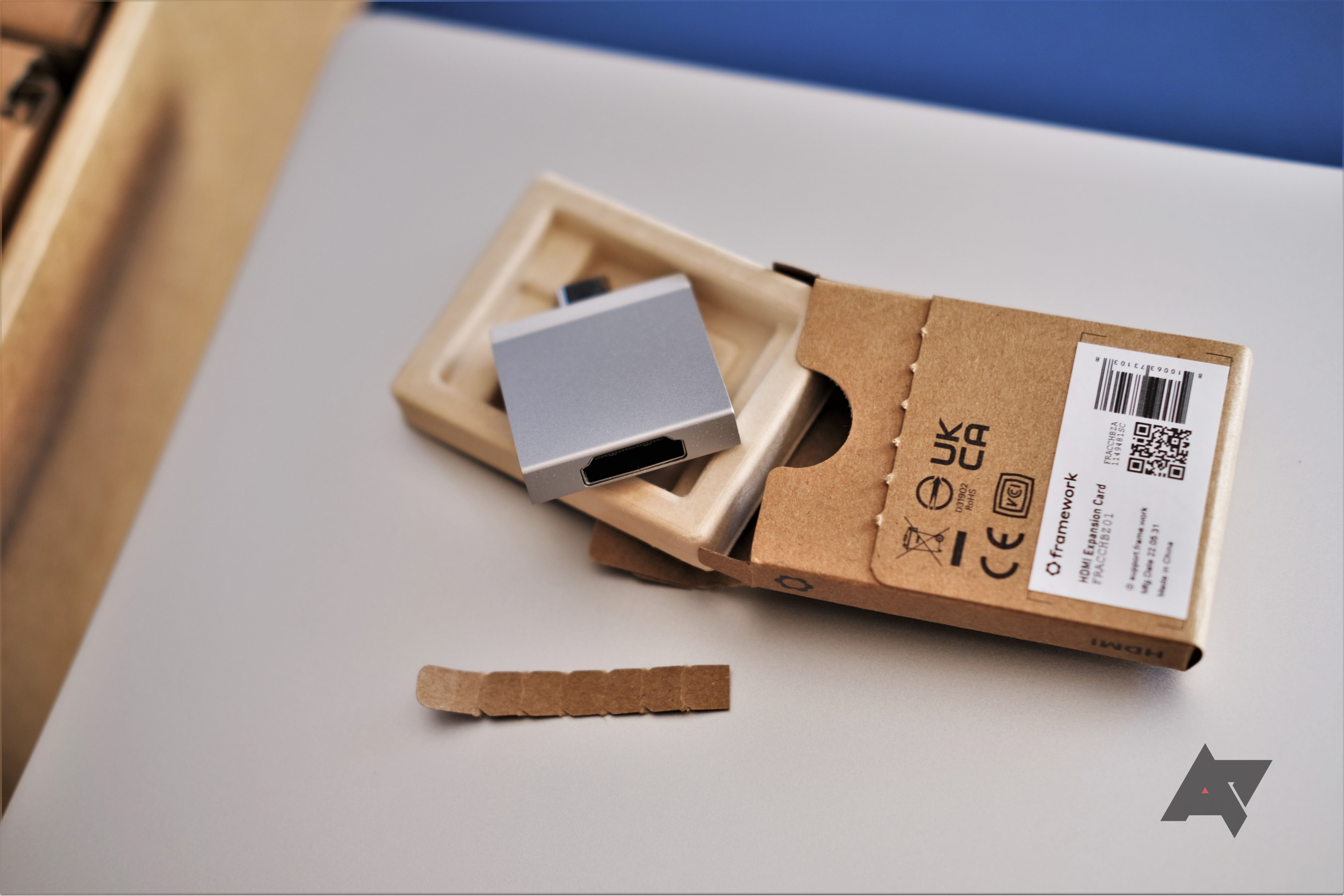
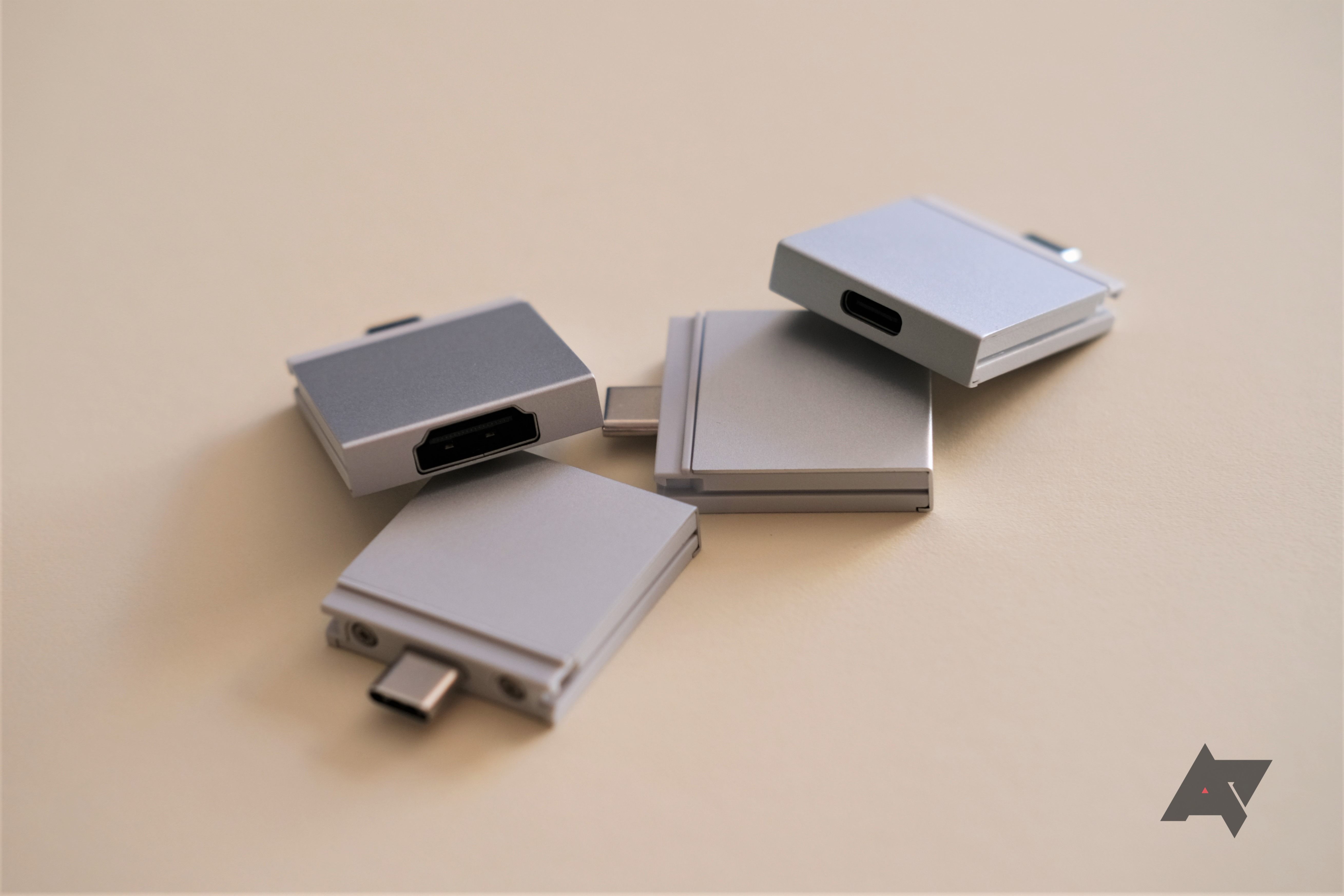
Overall, the design is fine. It gets the job done and offers some interesting perks, like the ability to swap the screen's bezel, and of course, there are a few options to choose from. So right off the bat, it's clear you can tune the machine's hardware to your liking. That's pretty remarkable for any laptop, let alone a Chromebook.

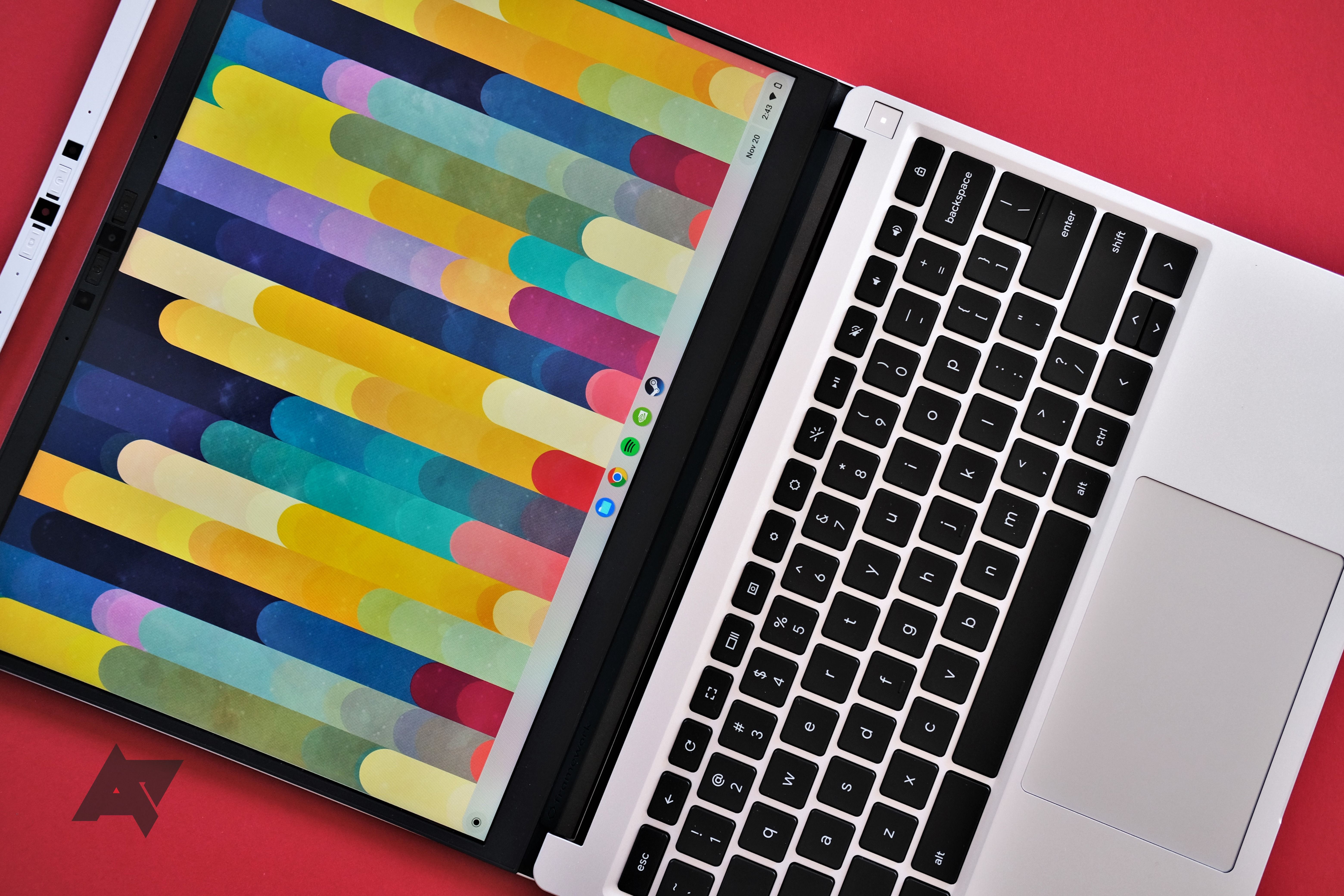
Once you get to the internals, the choice right now is an Intel i5-1240P paired with 256GB storage and 8GB RAM, though it sounds like more models might be an option as more batches are released. Since the Chromebook is fully upgradeable, you can add more RAM, which I did since Framework supplied me with an extra 8GB in the box.
And don't worry; the existing RAM port can be swapped if you want to jump from two 8GB sticks to two 32G sticks to hit the machine's max 64GB RAM support. You can also upgrade the storage since it's an easily changed M.2 SSD. Still, what you get out of the box is plenty, but it sure is nice to have some room to expand if needed.
Best of all, opening the device to get to the internals is a cakewalk. Framework even supplies the hex driver to open the thing up. Simply unscrew five screws (yes, the screws remain in the baseplate after they are unscrewed, so you won't lose them), and you can easily pop off the keyboard to get to the mainboard and the rest of the internals. It took me less than a minute to open the machine and slap in an extra RAM stick. It's that easy.
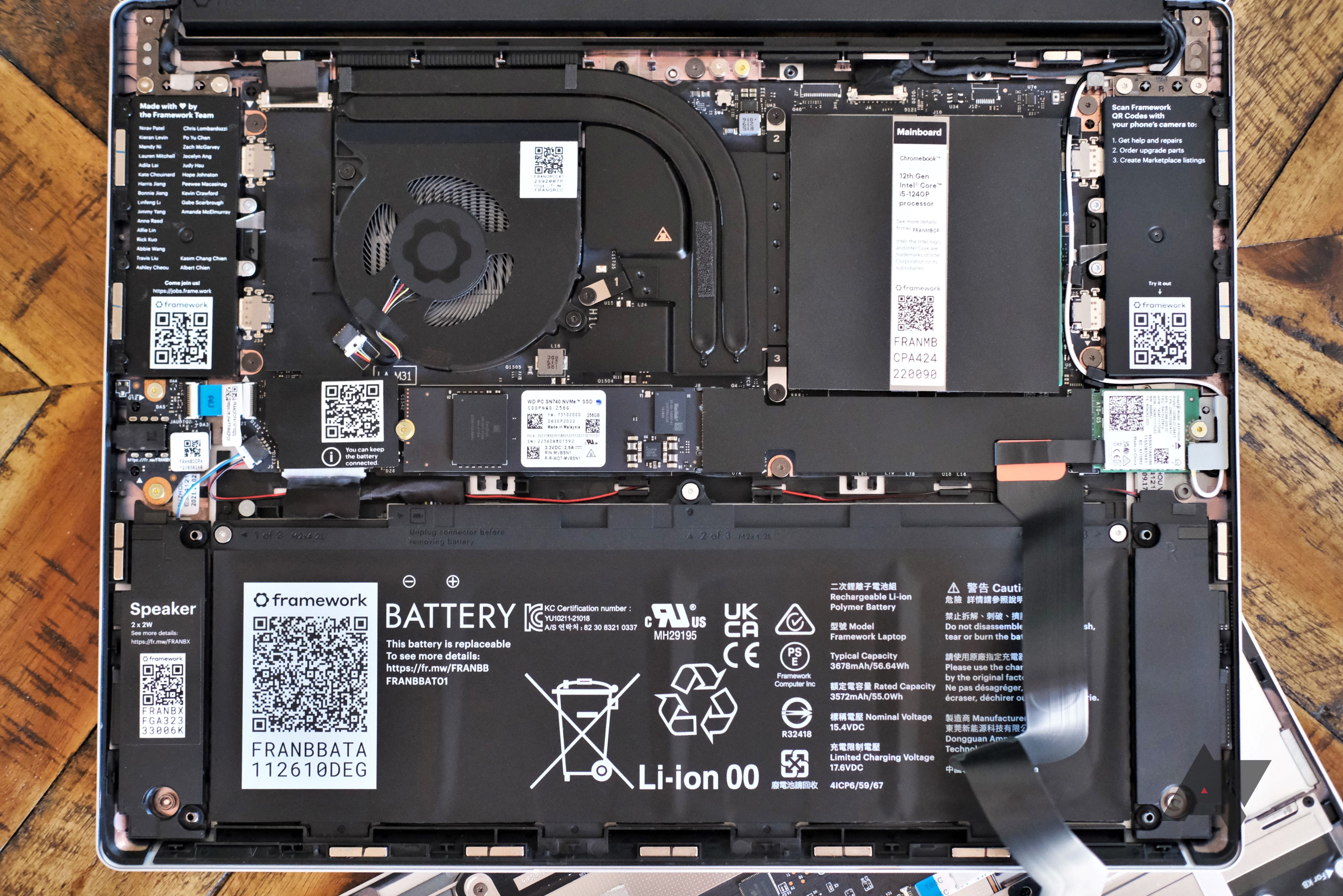
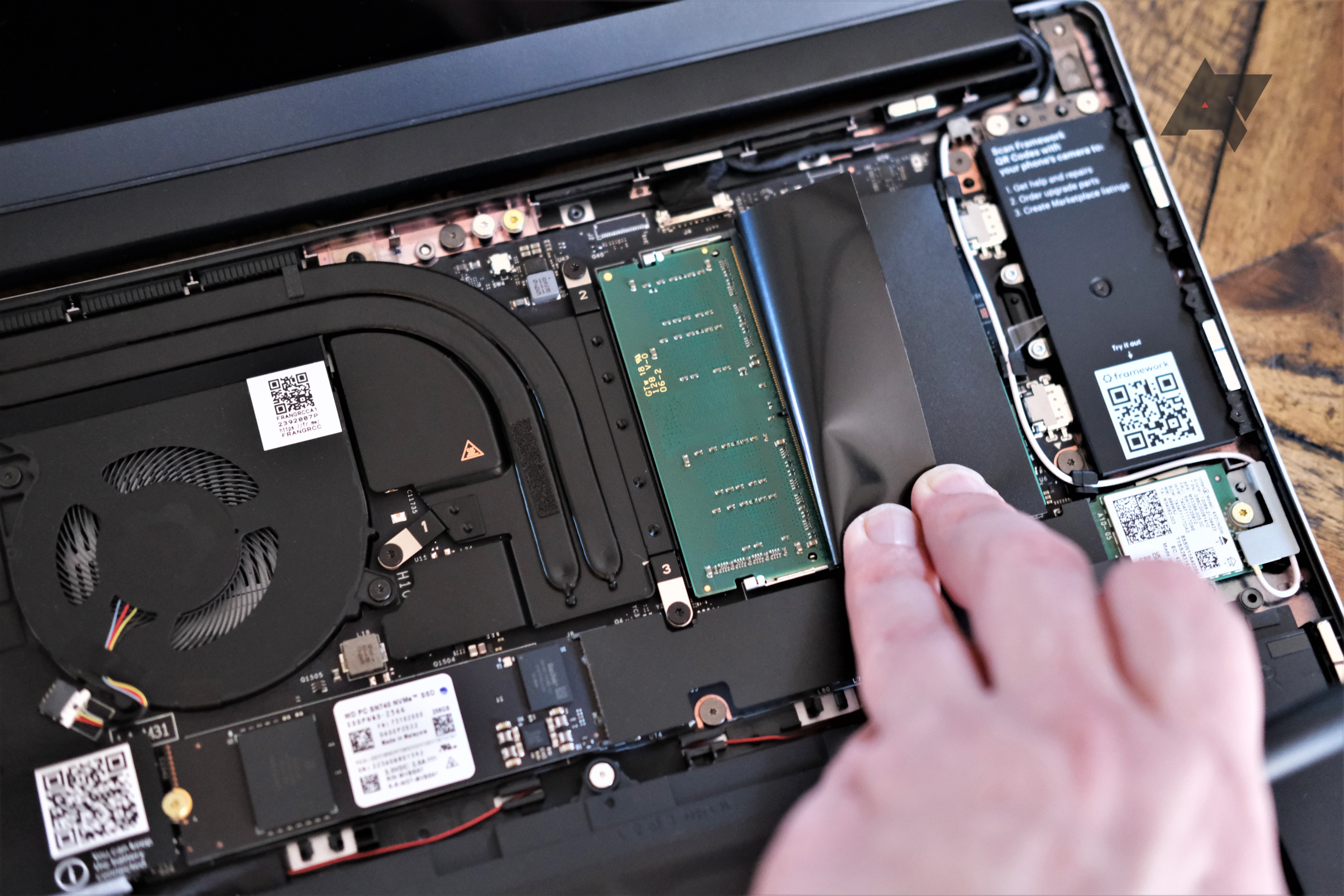
As for what's in the box, well, this is still a Chromebook, so there isn't much beyond the laptop and power adapter. It's a 55W adapter, so it charges the Chromebook quickly, and the ports you choose when checking out also come in the box, where I received a micro-USB slot, three USB-C ports, a USB-A port, and an HDMI port. I chose to run two USB-Cs, a microSD, and a USB-A. The charger is USB-C, so you can easily power up on each side of the device if you place your USB-C ports on each side.
Framework Laptop Chromebook Edition: Screen, keyboard, and trackpad
First and foremost, the screen does not support touch; the Framework Laptop Chromebook Edition is more like a traditional laptop in this way, which makes sense since the device exists as a tweak to the Windows/Linux line of Framework Laptops. It would also appear the screen is one of the few things you can't change on this laptop.
Despite the lack of touch support, the 13.5-inch 3:2 screen offers a 2256x1504 resolution. The squarish shape is great for fitting long windows with text, though modern media will be letterboxed, and this includes streamed games, such as Geforce Now and Xbox Cloud Gaming. Still, the shape is close to 4:3, so classic emulated games fit nicely if that's your sort of thing.
Overall, the screen offers deep colors and is sharp enough for work and play while keeping battery consumption down since it isn't pushing an incredibly high resolution. It's the perfect happy medium, especially if you're a fan of the 3:2 screen ratio, and with 400nits, you can easily see the screen outdoors.
What I especially appreciate about the keyboard is that it's black, which means the legends are plenty legible without backlighting and are even more readable with it. Plus, the rest of the laptop is silver, and many manufacturers have a penchant for pairing a silver chassis with a silver keyboard, which is always much harder to read. Framework made the right call here with the contrast of the black keyboard and the silver body.
Since this is a Chromebook, it comes with a Chromebook-style keyboard (there's no F-row) that contains everyone's favorites, like immediate shortcuts to volume, screen brightness, and a keyboard backlight toggle. The keys offer about 3-4mm of travel, with a small tactile response that ensures you know you pressed a key. So typing for long stretches is plenty serviceable on the device; I never felt hampered using the keyboard, even writing this review.
As for the trackpad, it's large and in charge, typical of a Chromebook as well as modern laptops. There's plenty of room to slide, tap, and pinch your fingers for navigation, and the whole thing clicks with a pleasing feel that doesn't take too much pressure.
Framework Laptop Chromebook Edition: Software, performance, and battery life
On the software side of things, the device runs ChromeOS, so most will know what to expect here. The OS is still breezy to use, with a minimum of distractions as well as features. It's a simple interface, and I choose to use the small corner app drawer that's close to a Windows desktop layout. Of course, you can install Android apps from the Play Store. You can also turn on Linux support from the settings to take advantage of Linux apps on the machine, including Steam, for those daring enough to flip the device to the beta channel.
While I was trepidatious to test out Steam on a machine running integrated graphics, once I had the Steam beta up and running, I installed Stardew Valley and was able to maintain 60FPS with a couple of tweaks. Perhaps it's the Iris Xe graphics punching above their weight, but I have 10th gen Intel machines running Windows that can't maintain 60FPS in the game, not even the i7s. It would seem Steam is looking promising on Chromebooks, though with integrated graphics, you'll have to keep the titles to the ones that aren't demanding. I also tested Octopath Traveler, and it was a slideshow, even when dropping the game's resolution below the native res.
Still, I'm pretty impressed with the performance of the Framework Laptop Chromebook Edition, and not just because the machine can play a few games. Seeing that I upgraded my RAM to 16GB, using Chrome and opening endless tabs was never an issue, with no sign of slowdown when doing heavy work jumping from a packed browser, image editor, to Slack. Yes, the fan will ramp up quickly under a heavy load, and you will hear it. But thanks to this active cooling, you get much more performance than a passively cooled machine.
|
Framework Laptop Chromebook Edition |
ASUS Chromebook Flip CX3 (CX3400) |
|
|
Speedometer 2.0 |
209 |
130 |
|
Jetstream2 |
231 |
131 |
|
MotionMark 1.2 |
1020 |
420 |
As you can see in these performance tests above, the Framework Laptop Chromebook Edition is no slouch, easily trouncing the recently reviewed ASUS Chromebook Flip CX3 (CX3400). Sure, you have to pay a pretty penny for this performance. However, compared to devices like the ASUS Chromebook Flip CX3 (CX3400) and its passively cooled 11th gen i7, you can see how an actively cooled 12th gen i5 trumps that performance easily. A fan makes all the difference.
The good news is that even though the Framework Laptop Chromebook Edition is going to be drawing tons of power to offer such high-end performance for a Chromebook, battery life is fantastic. A big reason for this is that Google requires Chromebooks to meet specific criteria, like 10 hours of active use and support for 14 days of standby. While my use never saw 10 hours, I got past 8, which is a full workday. That's perfectly acceptable, if not appealing.
Framework Laptop Chromebook Edition: Should you buy it?
Do you love Chromebooks and ChromeOS? Are you a geek at heart who loves to play with new tech that offers incredibly interesting features, like a fully-upgradeable laptop? Then yes, the Framework Laptop Chromebook Edition is easily one of the most unique and performant Chromebooks to cross my path. Sure, a cool $1K is a lot to ask, especially for a niche Chromebook; this isn't a device that will appeal to the masses.
But have you ever once used a laptop that offered modular ports? I can certainly say it's an absolute treat. Like a young boy on Christmas, the first thing I did was open the sucker up just to slap more RAM into it, just because I could. These things give me pleasure when playing with new tech, and perhaps this isn't enough to justify a purchase on its own. It sure doesn't hurt, does it?
Besides the high price, the only real caveat is that if you ever want to upgrade the mainboard, they don't come cheap. They aren't off-the-shelf motherboards (they have to be purchased directly from Framework), some surpassing this laptop's price (though these are i7 boards, so the price is warranted). Still, it's not like there are any other laptops out there that make upgrading so easy. Plus, you have the option to fully reconfigure your unit with a Windows/Linux board, though you'll probably want to replace the keyboard, too. What you get with the Chromebook is pretty specific to the OS.
All in all, I love what Framework is doing by pushing for full upgradability in laptops, and by extension, its new Chromebook model is a breath of fresh air in an incredibly stagnant field. Sure, Google is pushing games with its new gaming Chromebooks, but the Framework Laptop Chromebook Edition easily holds its own and can play the less demanding indie Steam games pretty well. Game streaming, on the other hand, will be letterboxed thanks to the 3:2 screen; no way around that. But who cares about streaming when you can play local Steam games in a Linux container?
The Framework Laptop Chromebook Edition might not be on everyone's radar, thanks to a high price and an OS often understood as limited. But if you're a big fan of Chromebooks and are looking for something new that actually brings tons of unique features to the table, like modular ports and upgradable internals, then I can easily recommend the Framework Laptop Chromebook Edition. It's the coolest Chromebook I've ever used, and my last week testing it was a blast.
Buy it if…
- Upgradability and performance are your top priorities
- Versatility of ports and a square screen are needed for work
Don't buy it if…
- You need more than ChromeOS has to offer
- You primarily consume modern media on your laptops
FAQ
Q: How does the Framework Laptop Chromebook Edition compare to the ASUS Chromebook Flip CX3 (CX3400)?
Both of these Chromebooks are competing at a similar price point at their highest tiers. While the Framework Laptop Chromebook Edition only offers an i5 for the time being, the ASUS Chromebook Flip CX3 (CX3400) offers an i7 at $1k. Then again, the ASUS is passively cooled, while the Framework contains an internal fan for active cooling, which means the Framework offers much more performance for the price. Of course, fan noise will be a constant with the Framework, whereas the ASUS doesn't make any noise at all. So the choice comes down to whether you need pure performance or something that conserves battery with an underclocked chip that's made to run cool, forgoing a fan.

